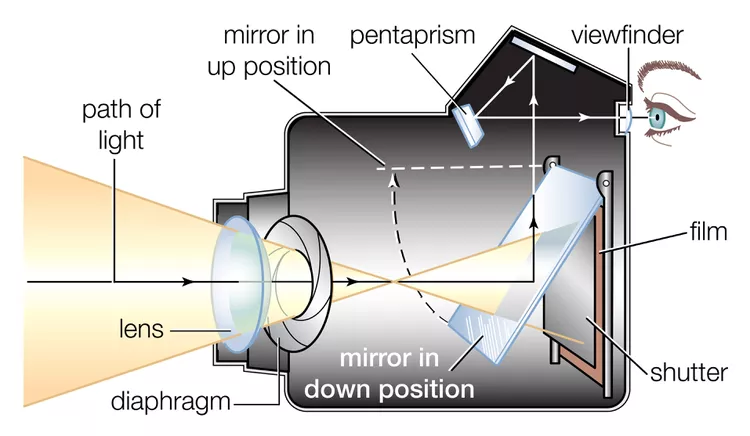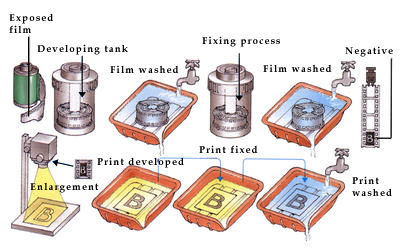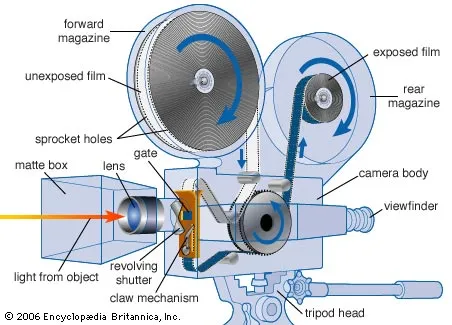Though we all have easy access to cameras these days, have you ever stopped to think to yourself: how do cameras work?
Cameras have come a long way since their inception back in the 1800s. Film cameras, which became commercially available in the late 1800s, revolutionized how we capture and preserve memories. These cameras used light-sensitive film to record images, a method that dominated photography for over a century.
The introduction of digital cameras in the late 20th century changed the game once again. The first digital camera, invented in 1975, replaced film with electronic sensors, allowing images to be stored and viewed instantly.
This innovation opened up new possibilities for photographers, changing the way people took photos. There was no need for expert understanding of film and cameras to be able to capture images.
HOW DO CAMERAS WORK?
Today, both traditional film cameras and modern digital cameras coexist, each offering unique experiences and capabilities. In this blog post, we explore how these different types of cameras work.
HOW TRADITIONAL CAMERAS WORK
Traditional cameras, also known as film cameras, operate with a chemical reaction.
When you take a photo with a film camera, light enters the camera through the lens. The lens focuses this light, capturing a sharp image and directing it onto the film which is housed inside the camera.
This film is coated with light-sensitive chemicals which are the magic behind traditional photography. The light hitting the film triggers a change in the chemicals, recording the image onto the film. However, this image can’t be seen immediately.It remains hidden until the film undergoes a development process.

Unlike digital cameras which provide instant photos, traditional cameras require a meticulous development process.
The film is treated with various chemicals in a darkroom to reveal the latent (or ‘invisible’) images and turn them into visible photographs. Each step in this process, from exposure to development, requires careful handling and precise timing, which is why many people choose to have their film sent away to be developed by professionals.

HOW DIGITAL CAMERAS WORK
When digital cameras came along, they represented a significant advancement in photography by replacing film with high-tech image sensors.
Unlike traditional cameras, digital cameras capture images as data using these sensors, as millions of tiny light-sensitive elements called pixels. When a photographer presses the shutter button, the lens directs light onto the sensor, which converts the light into an electrical signal. This signal is then processed and digitized to create an image.

A huge benefit of digital cameras is that they offer immediate feedback, displaying the captured image directly on a screen. This feature makes it easy to review and adjust your photos on the spot. It also allows you to take multiple shots without waiting for film development.
The captured images are stored on a memory card, for easy storage and transfer to other devices. Digital cameras also are equipped with features like automatic settings, making it easier for users to snap a photo without worrying about focus, exposure, or aperture. Now, photography is more accessible and versatile than ever before.
HOW MOVIE CAMERAS WORK
Movie cameras are designed to capture motion by taking a series of images in rapid succession, which are then put together to create a ‘moving’ image.
Traditionally, these cameras used reels of film to record the sequence of images. The standard frame rate for movie cameras is 24 frames per second, meaning 24 individual pictures are taken every second to achieve smooth motion.

With traditional, reel-based movie cameras, the film passes through the camera’s exposure gate, where each frame is momentarily exposed to light through the lens — like in the traditional camera we mentioned above.
After exposure, the film is advanced to the next frame, and the process repeats rapidly. This mechanical movement needs to be extremely precise to ensure that each frame is correctly aligned and exposed.
Magnetic tape movie cameras work differently: instead of film, these cameras use magnetic tape to record the images. Light is still captured through a lens, where it is converted into an electrical signal by an image sensor. This signal is then recorded onto the tape.
Like with film reels, multiple images are captured per second to create the perception of motion. However, the recording and playback process is electronic, allowing for instant review and editing.
DIGITIZE YOUR CAMERA WORK
Whether you’ve used analog, digital, or movie cameras to record all of your special memories over the years, it’s safe to say that cameras have played an important role in our lives.
If you have a stash of old film or videotapes gathering dust, EverPresent can help you digitize your collection, keeping your memories safe for years to come. Get in touch today to learn all about our digitizing services.

